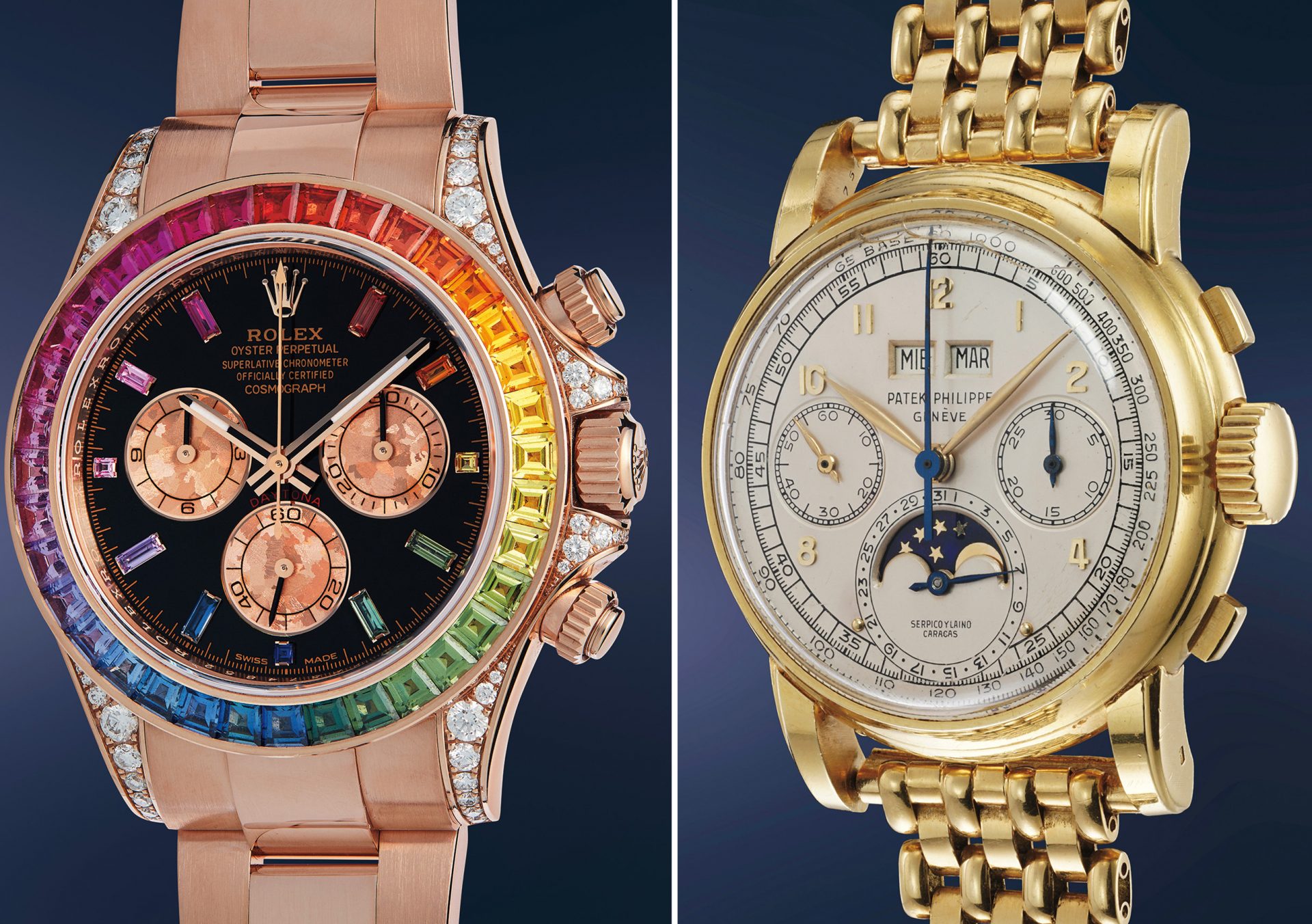
Paul Boutros has been immersed in a world of fine watches for decades, first as the son of a collector, later as a collector himself and currently as Phillips’ head of watches in the Americas.
WATCHPRO challenged Mr Boutros to come up with his ten favorite watches of all time, a task that led to some serious soul-searching.
“This was tough to do because there are so many good watches,” says Mr Boutros.
“I struggled with numbers nine and ten because of the ones that I had to leave out, but I wanted the list to be as diverse as possible and not just a list of models from certain brands.”
Due to his dilemma, we allowed Mr Boutros five honorable mentions at the end.
Rolex Cosmograph Daytona ‘Rainbow’
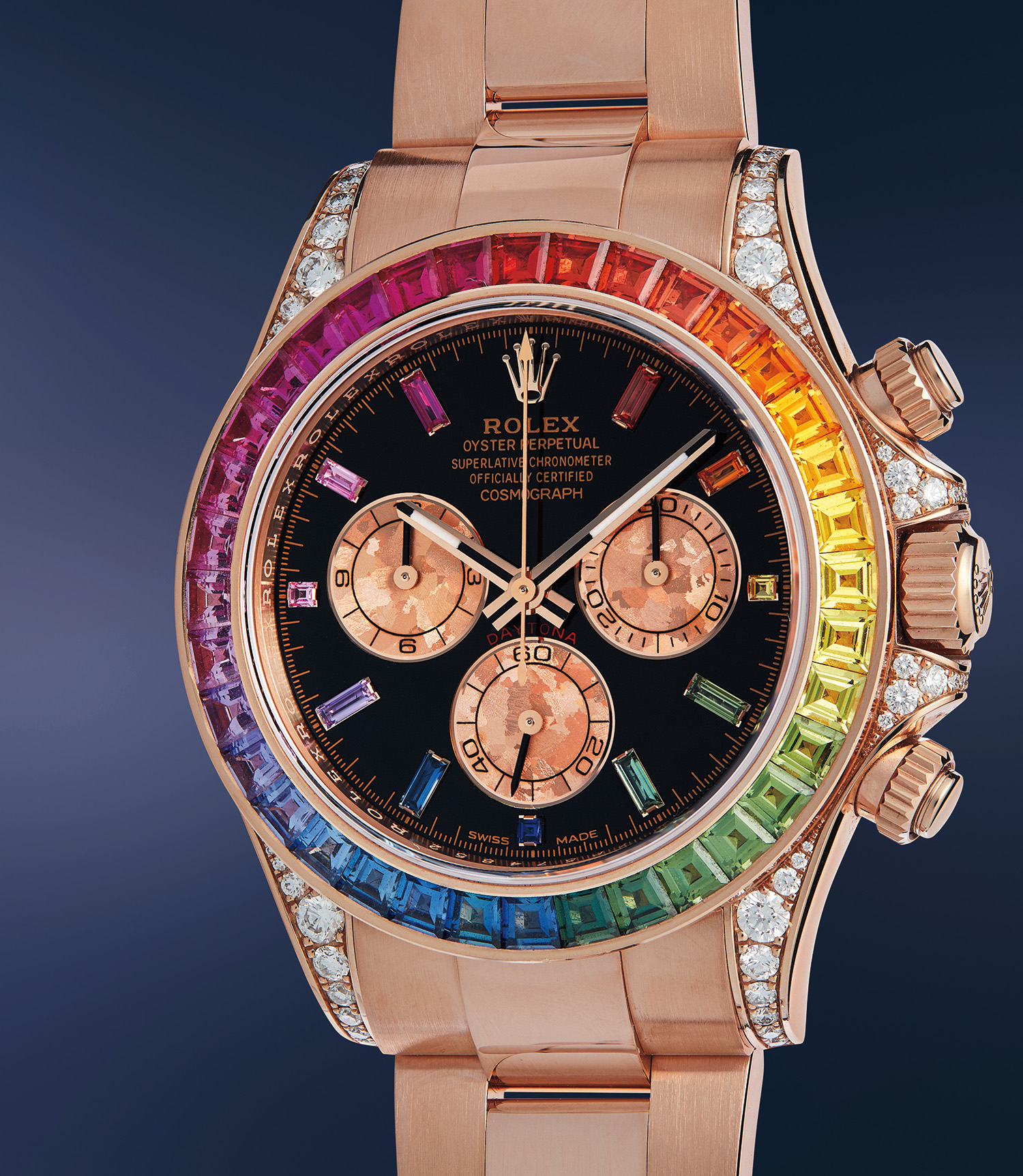
There have been so many references since its introduction in 1963, which is one of the reasons I love the Daytona so much.
It’s evolved in so many ways and Rolex has been playful with it, especially in the 1990s and into the 2000s when they started gem-setting and introducing versions like the Daytona Beach with hardstone dials.
Then finally, in 2012, they introduced the Rainbow, which is my favorite modern Daytona (if we’re talking about vintage then it would be a gold Paul Newman, probably the JPS).
Back in 2012, the market wasn’t ready to grasp the concept of the Rainbow and how important it was.
Initial feedback from collectors was that it was pretty ostentatious – similar to the reception received by the Leopard Daytona that came out years earlier.
But a few years later, Rolex’s position as a true innovator was confirmed when many brands introduced their own rainbows.
More people started to recognize how great the gem-setting on Rolex sports watches was and how rare the pieces were.
The gems are set in the most robust way – the ‘Rolex way’.
Rolex builds watches that you can wear every day without worry – this is why they don’t make minute repeaters or perpetual calendars – they are too delicate. But the quality of the gem setting, is simply outstanding.
Also, the quality of the gems is extraordinary. They use internally flawless stones, color matched and precisely cut – all hand selected and hand set.
In my opinion, the combination of the quality of the stones and the quality of setting is even better than the top jewellery houses.
Rolex really does the best.
F.P. Journe Chronomètre à Résonance
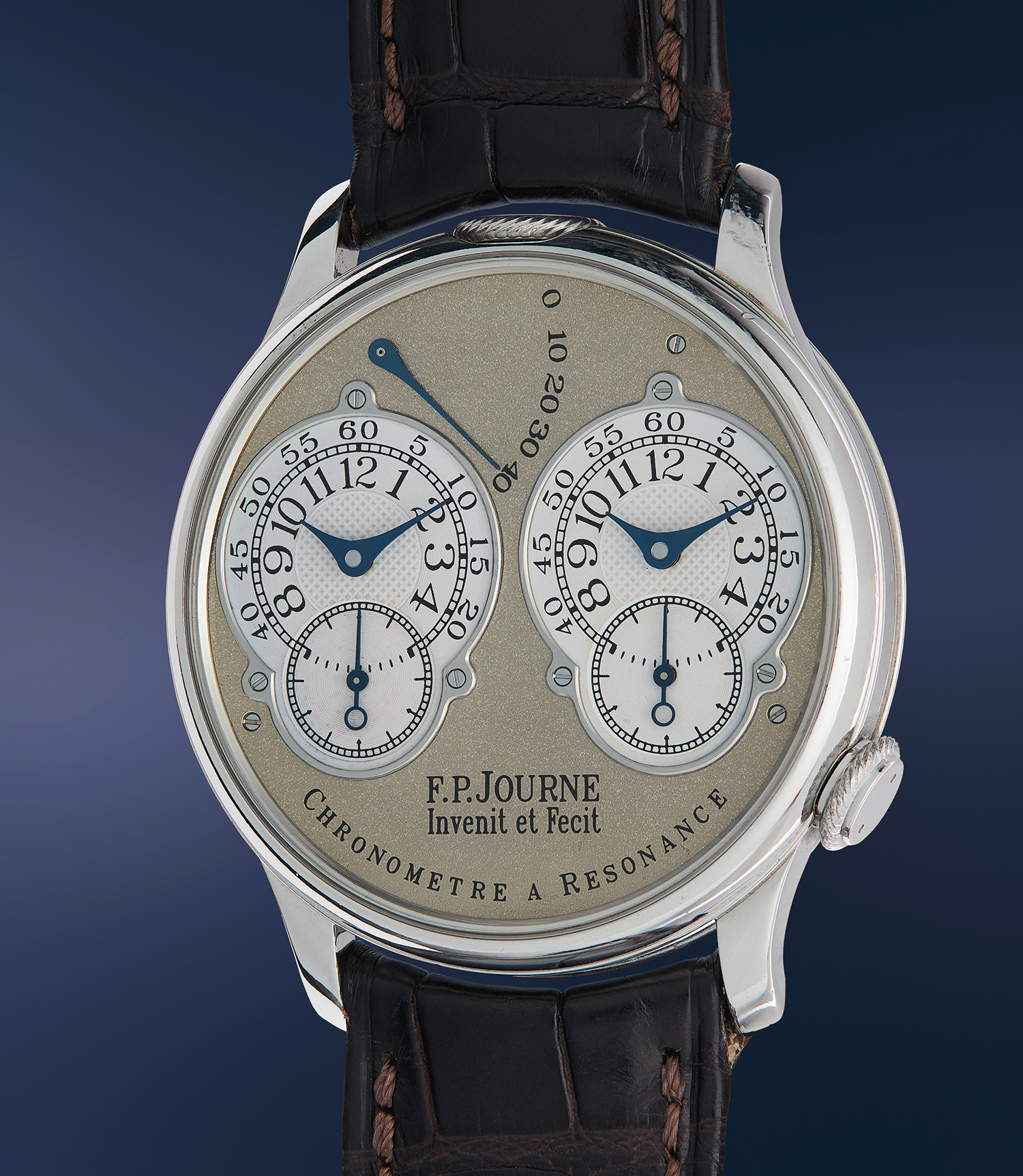
For me, this is the most important wristwatch of the 21st century.
Journe was the first to make a resonance timepiece in the form of a wristwatch.
Christiaan Huygens first observed resonance in the 17th century, Janvier built a resonance clock with two pendulums sharing the same movement architecture in the 18th century, and Breguet introduced the resonance pocket watch in the early 19th century.
But nobody attempted it in a wristwatch until Journe in the late-1990s, with the first models being officially launched in 2000.
In Journe’s first generation Chronomètre à Résonance you have two complete movements integrated into one, with separate mainsprings, separate going trains and separate escapements.
And, because of this, and because of the laws of physics, the vibrations start to resonate and they begin to oscillate at exactly the same rate.
It is so fascinating and so cool – because of the way they oscillate, they correct each other’s errors and the result is one of the most accurate mechanical wristwatches ever made.
When it was launched, the following for the independents was very small, and then it started to rise and rise and rise.
Around 2005 when he switched from brass to gold movements, Journe started to gain a lot of attention.
As with the Rainbow, it took the broader market a few years to recognize how great that watch is. His name is definitely much better known now – and of course, his auction results are breaking records left and right.
Patek Philippe ref. 2499
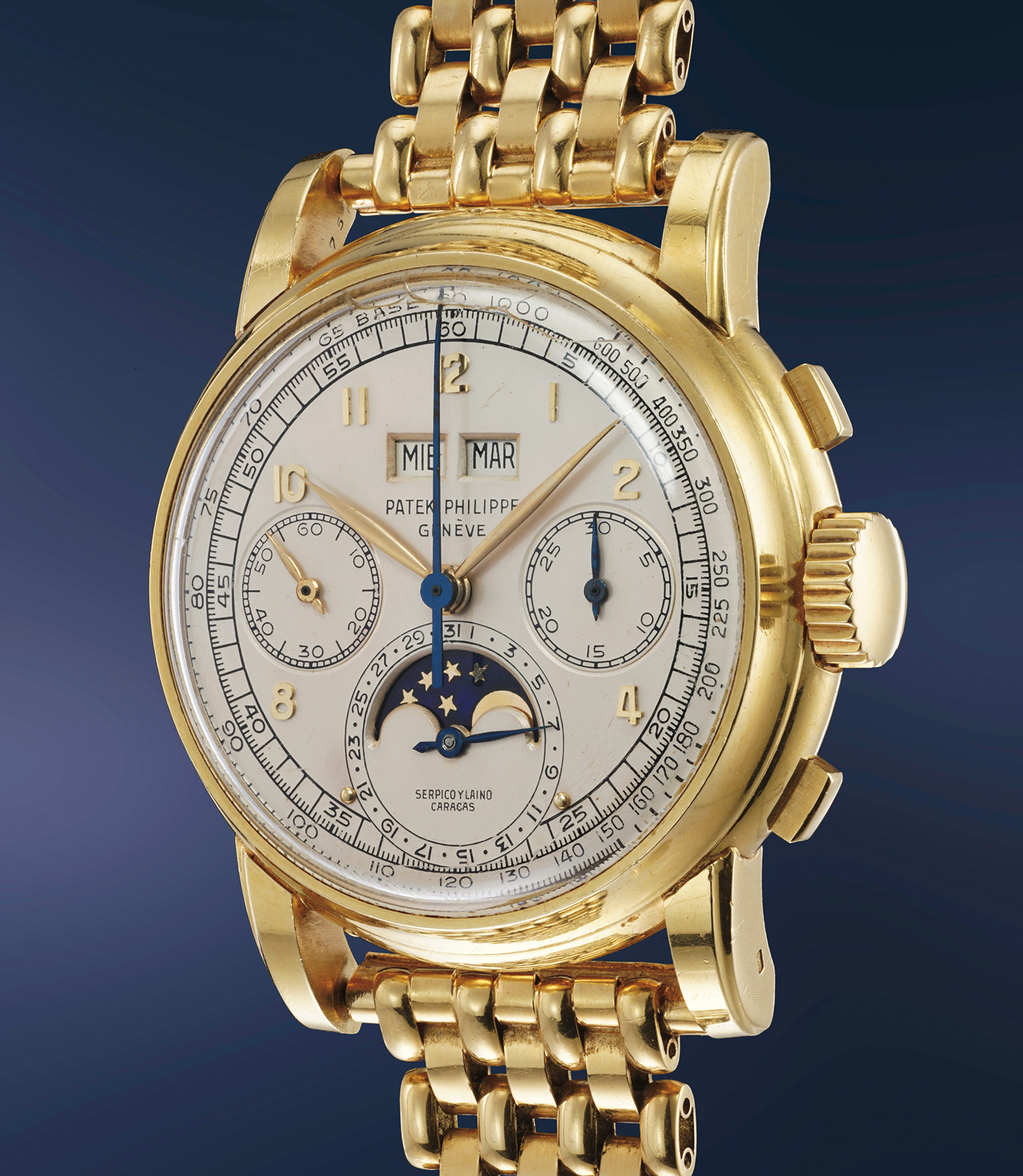
Patek Philippe has been making perpetual calendar chronographs since 1941 with the ref. 1518 through to today’s ref. 5270.
There have been plenty of models, but my favorite is the ref. 2499 first series from the early 1950s.
Made from 1951 through to 1985, only about 349 examples of the ref. 2499 were made over four generations.
It has perfect proportions – a 37.5mm case wonderfully curved, stepped lugs and a perfectly symmetrical dial. It’s just the ultimate complicated watch.
Patek Philippe was the first brand to make a series production perpetual calendar and perpetual calendar chronograph and it is still, in my eyes, the best.
Both were introduced in 1941, in the midst of the Second World War, and no other brand would offer a perpetual calendar wristwatch until Audemars Piguet in 1955 and no other production perpetual calendar chronograph existed until the IWC Da Vinci in 1986.
Rexhep Rexhepi Chronomètre Contemporain
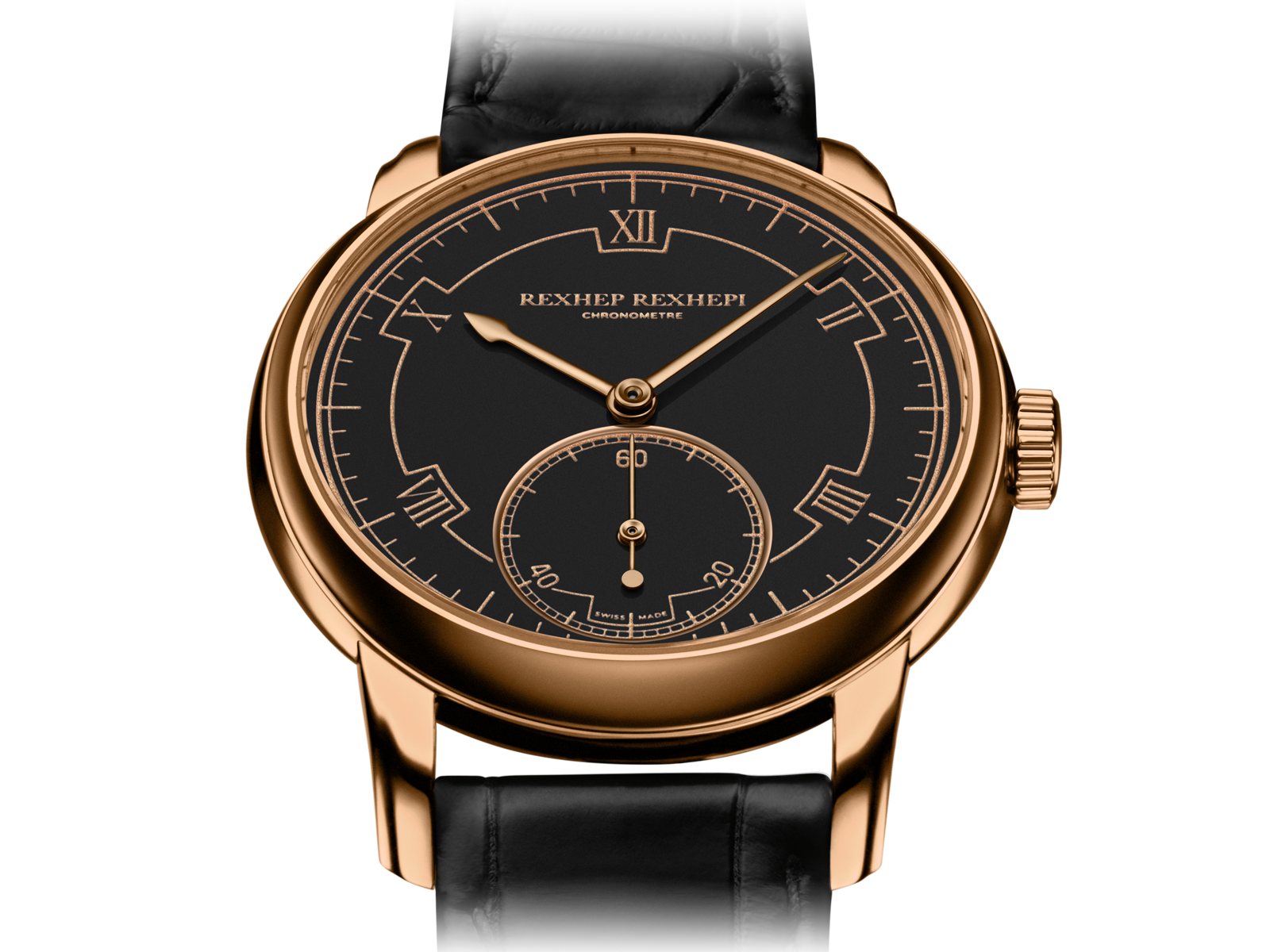
The Chronomètre Contemporain was the first watch to be created by Rexhep Rexhepi in his own name following his days as an apprentice at Patek Philippe and creating the Akrivia in Geneva.
Introduced in 2018, with a case reminiscent of the ref. 2499, this is a killer watch.
The in-house movement is designed by Rexhep and is wonderfully symmetrical with exceptional hand-finishing throughout.
It is fitted with an enamel dial and cased in either rose gold or platinum.
The first generation CC1 is now discontinued but was made in 25 examples in each metal.
For me. It’s just such a sublime, modern, handmade watch and the perfect manifestation of Rexhep’s talent.
One thing it has in common with everything I’ve chosen is that it is incredibly wearable and will work for many wrist sizes, so will always have broad appeal.
For the second version, he came out with a deadbeat-seconds and it’s a beauty as well.
We have only seen two of his watches come to auction and both were unique pieces for Only Watch.
The rise in price between the two years (2019 and 2021) indicates the growth in interest, the first selling for CHF 360,000 (approx. £317,400/$375,400), the second for CHF 800,000 (approx. £705,500/$834,400).
Philippe Dufour Grande et Petite Sonnerie
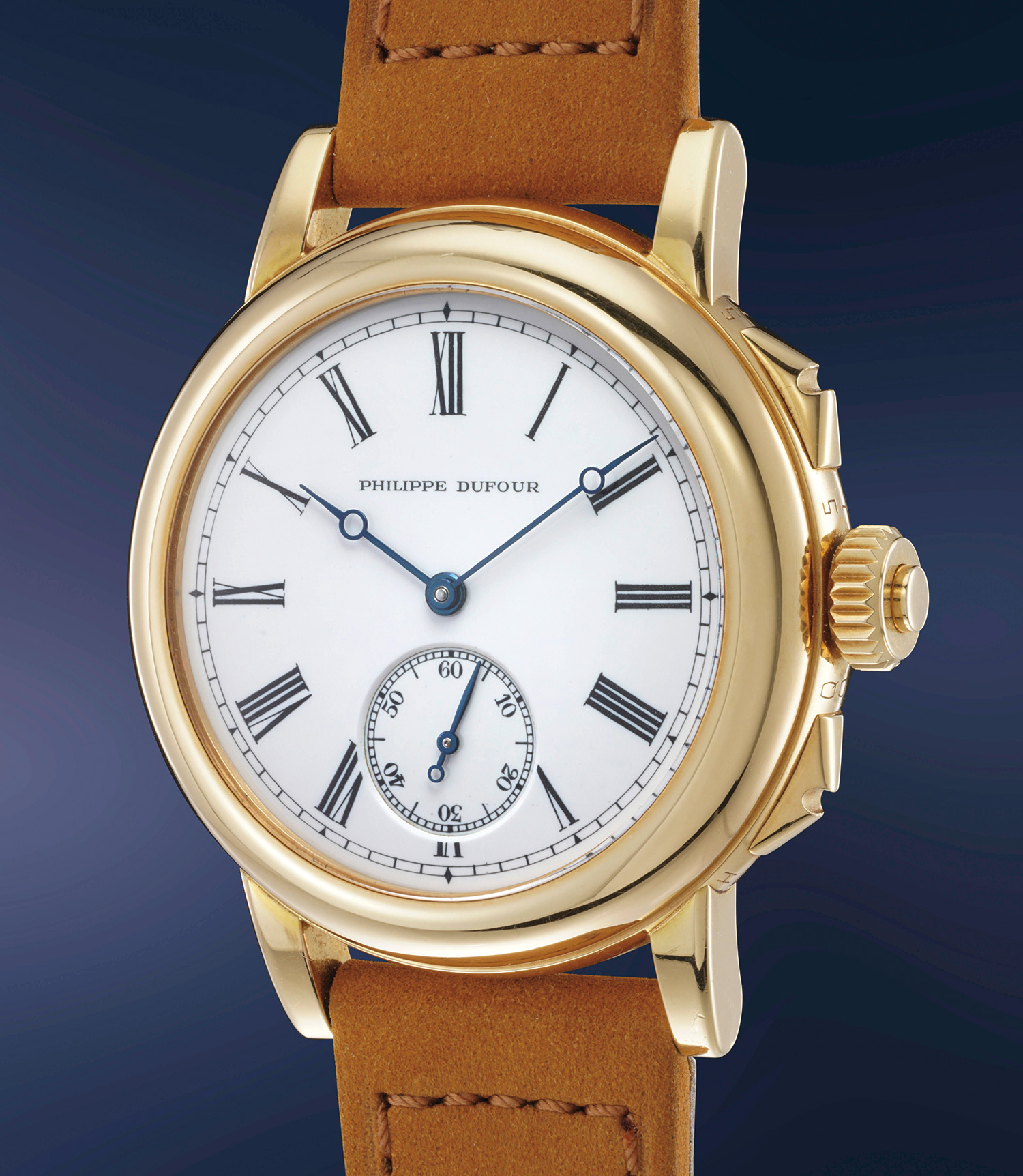
It is possible to see inspiration from Philippe Dufour’s Simplicity in the CC1, but it’s not that watch that is on my list.
Instead it is Dufour’s Grande et Petite Sonnerie introduced in 1992 – the world’s first wristwatch to be fitted with the complication.
It is the ultimate chiming watch demonstrating something rare and difficult, and it is finished to perfection.
The proportions are wonderful.
We sold the first one made last year at Phillips in Geneva. It was utterly magnificent – the design, the beautiful enamelling – it was just a watch of dreams.
Only eight examples have ever been made and the Phillips watch fetched CHF4.75m (approx. £4.2m/$6.3m).
Vacheron Constantin ref. 4261 Minute Repeater

Elegant, classy and perfectly proportioned, The Vacheron Constantin ref. 4261 Minute Repeater was made in very small numbers during the mid-20th century and is today highly sought-after among collectors.
Made in only 36 examples – each with a unique dial design – throughout the 1940s and early 1950s, this is a deceptively simple, time-only watch.
It is the most beautiful minute repeater with superb teardrop lugs and a very thin movement. In my personal opinion, it is better than any other minute repeating watch from that era.
One of my most vivid childhood memories is connected to this model. I went to an obscure auction house with my father where they were selling off abandoned safe deposit box contents. It was around 1988 and I was about 12 years old. Among a lot of rubbish there was a platinum Vacheron Constantin ref. 4261 with the name of an Arabian prince on the dial. The estimate was $3,000-5,000.
I remember telling my dad that he had to do everything to get the watch.
I couldn’t concentrate at school on the day of the sale and, when I got home, my dad told me that the watch had sold for $290,000.
That is probably what they are worth today – maybe about $500,000 for the one we saw as it was platinum and on a bracelet.
These memories last forever.
The watch was reissued in the 1990s in several configurations, including a skeleton, and Vacheron Constantin recreated the movement using techniques from the 1930s and 1940s.
Cartier Tank Cintrée
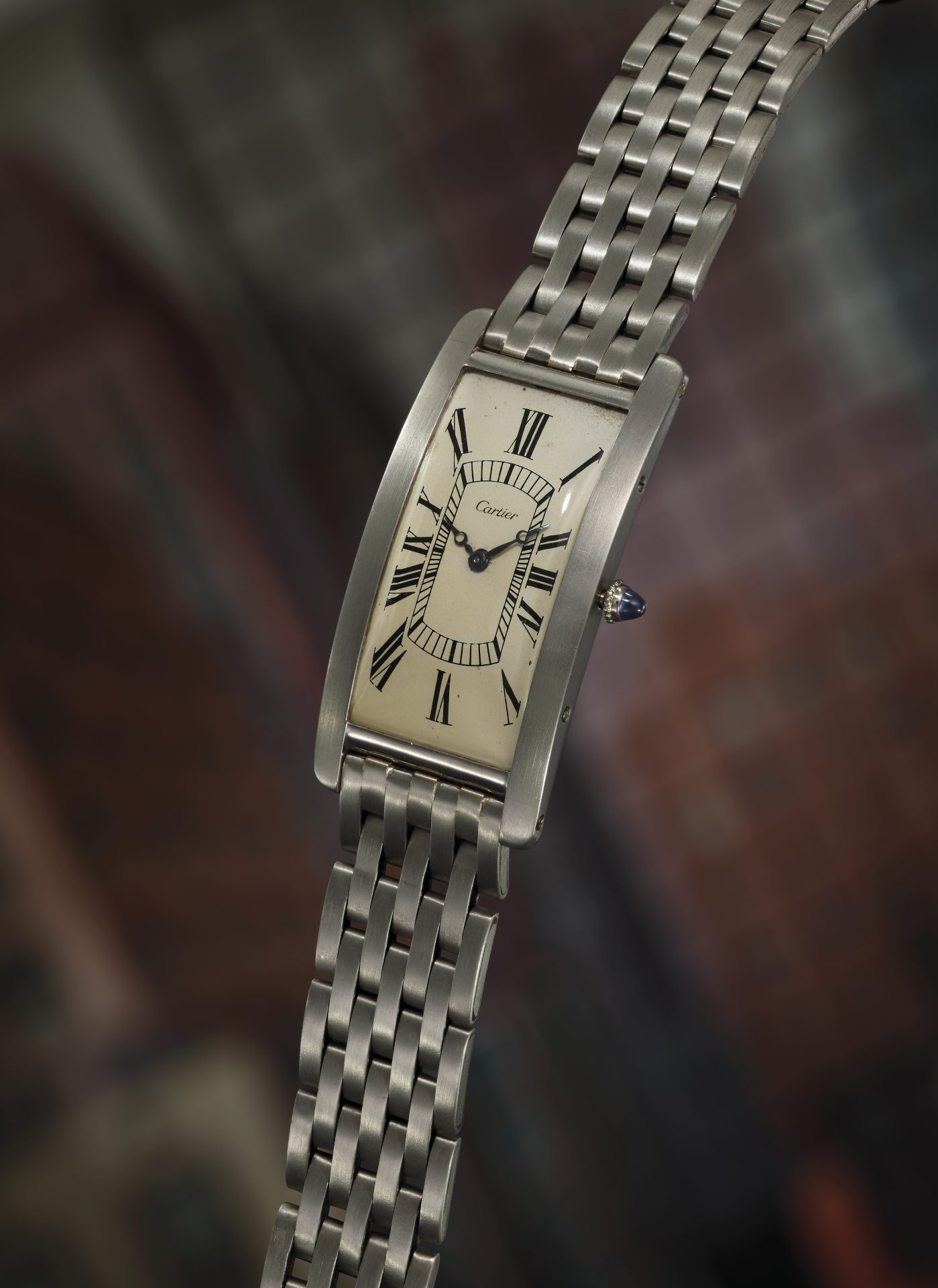
For me, the Cintrée is the ultimate Tank. Introduced in 1921, the proportions, the curves, the way it fits the wrist.
Imagine, in 1921, that large Tank and just how impressive it must have been to see a gentleman wearing that watch.
Cartier has produced it in very small batches every single decade since then – even to this day – in limited-edition versions.
I just think they’re wonderful time-only gentlemen’s dress watches.
Vintage Cartier is so loved right now.
In the 1990s rectangular watches were popular, but after that people tended to steer away from them and focus on round.
Now they are having a resurgence.
Vintage Cartier has always been great and people are looking for greatness. The way they were made, the way they were designed, was not inspired by any other brand. It was their thing.
As watch collecting attracts more people, Cartier has a good solid foundation to continue to grow in popularity.
Audemars Piguet Royal Oak
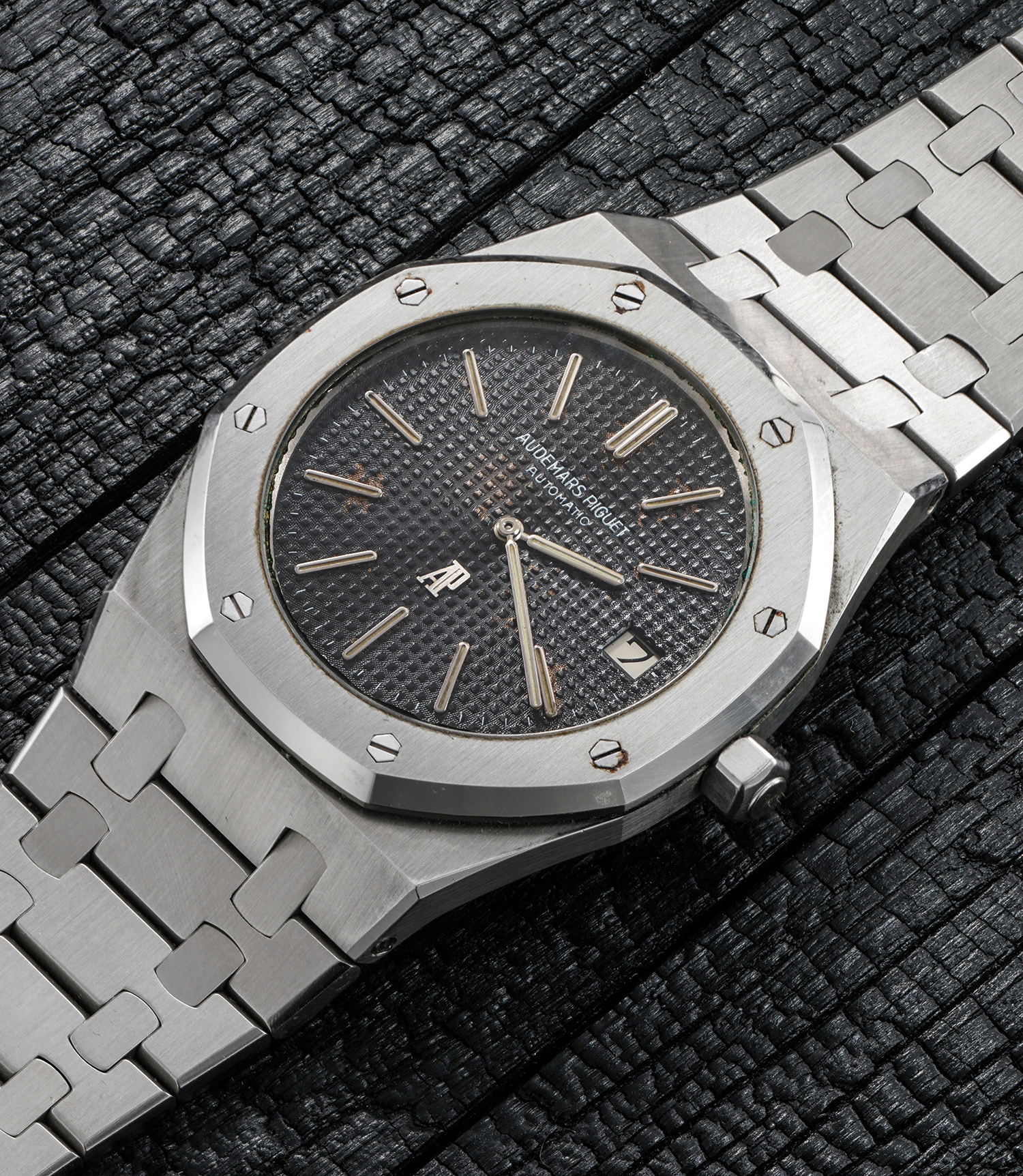
It could not be missed off this list, it is such a great watch introduced in 1972 and so audacious at the time.
It was the most expensive stainless-steel watch in history when it was launched. It was the midst of the quartz crisis and AP’s competitors were all gossiping that the brand would go bankrupt.
Eventually, they sold out of the first batch.
Gianni Agnelli was spotted wearing one, and the King of Spain, and the rest is history.
Patek Philippe realized it had to do something similar and hired the same designer to create the Nautilus in 1976.
Vacheron wanted a piece of the pie and in 1977 introduced the Jorg Hysek-designed 222.
And here we are, the watch that was supposed to bankrupt AP makes up probably 85 to 90% of the brand’s sales (with the Offshore included) of $1.6bn a year.
It is such a great watch, especially the 39mm Jumbo – so cool, so sophisticated, so ahead of its time. I love it.
The importance of the watch goes well beyond Audemars Piguet. Today almost every brand has a steel sports watch with integrated bracelet.
It was a true game-changer and kudos to AP for doing it.
Still today, AP is very adventurous – they still focus on high watchmaking like the Supersonnerie, they make in-house chronographs, they get a lot of flack about the Code 11:59 and for making too many Offshores and limited editions, but they are a great brand innovating at the very top end.
Omega Speedmaster ref. ST 105.012-66
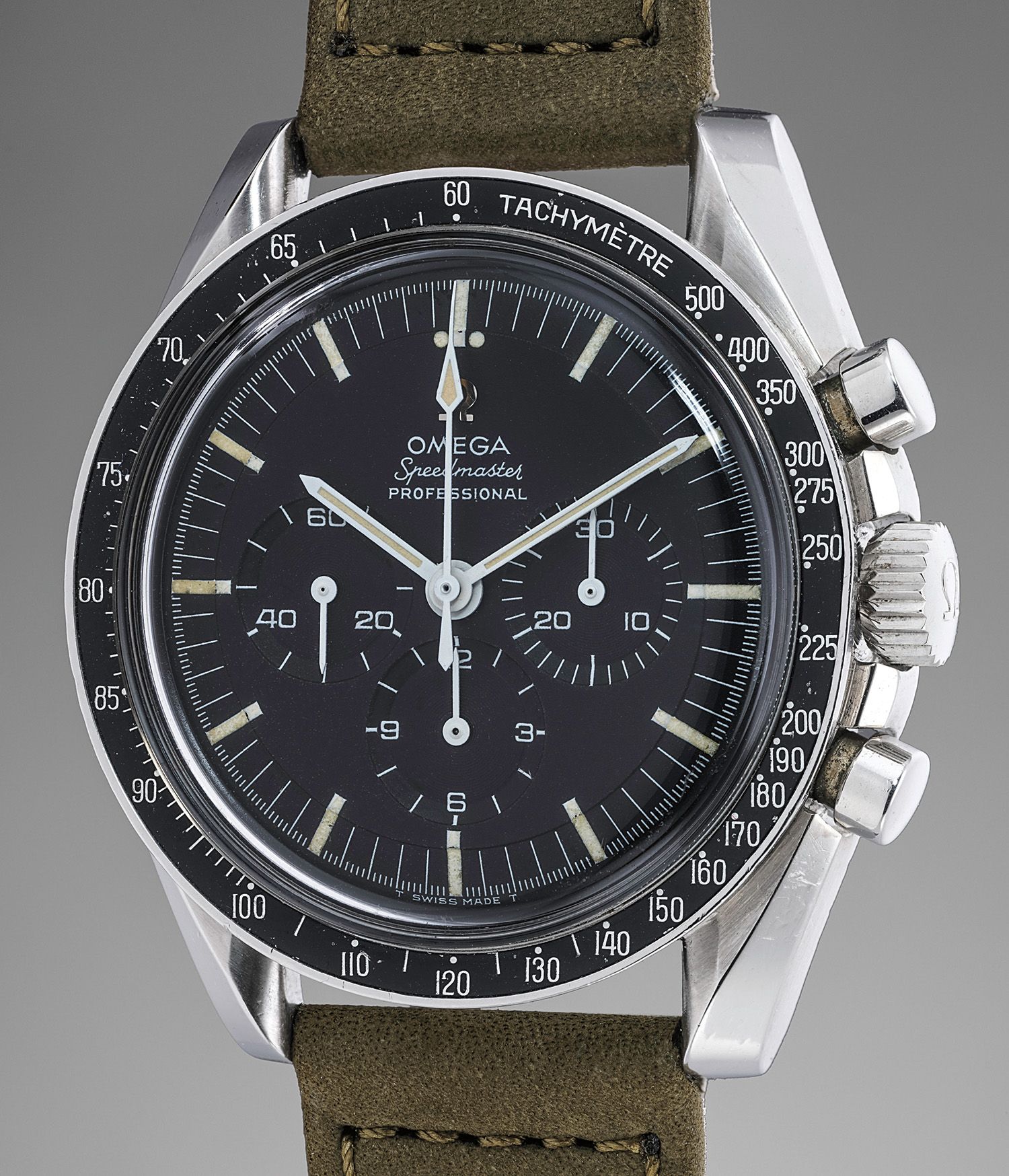
Simply a killer watch.
I particularly like the ref. 105.012 that started production around 1964 because that is the model that Neil Armstrong and Buzz Aldrin wore to the Moon in 1969.
It’s the perfect collectors’ watch – especially for new collectors because you can still find a good one that won’t break the bank.
As an engineer, I can appreciate the rigorous testing that a government agency puts products under, and the Speedmaster beat all other competing watches to be selected by NASA.
From its introduction in 1957 to this day, its continued to evolve.
But this is the 65th anniversary and the modern version is still based on the original and, like the Porsche 911, it still shares the same lines and look as the original.
It is just a terrific watch for the money.
Observatory Chronometer wristwatches
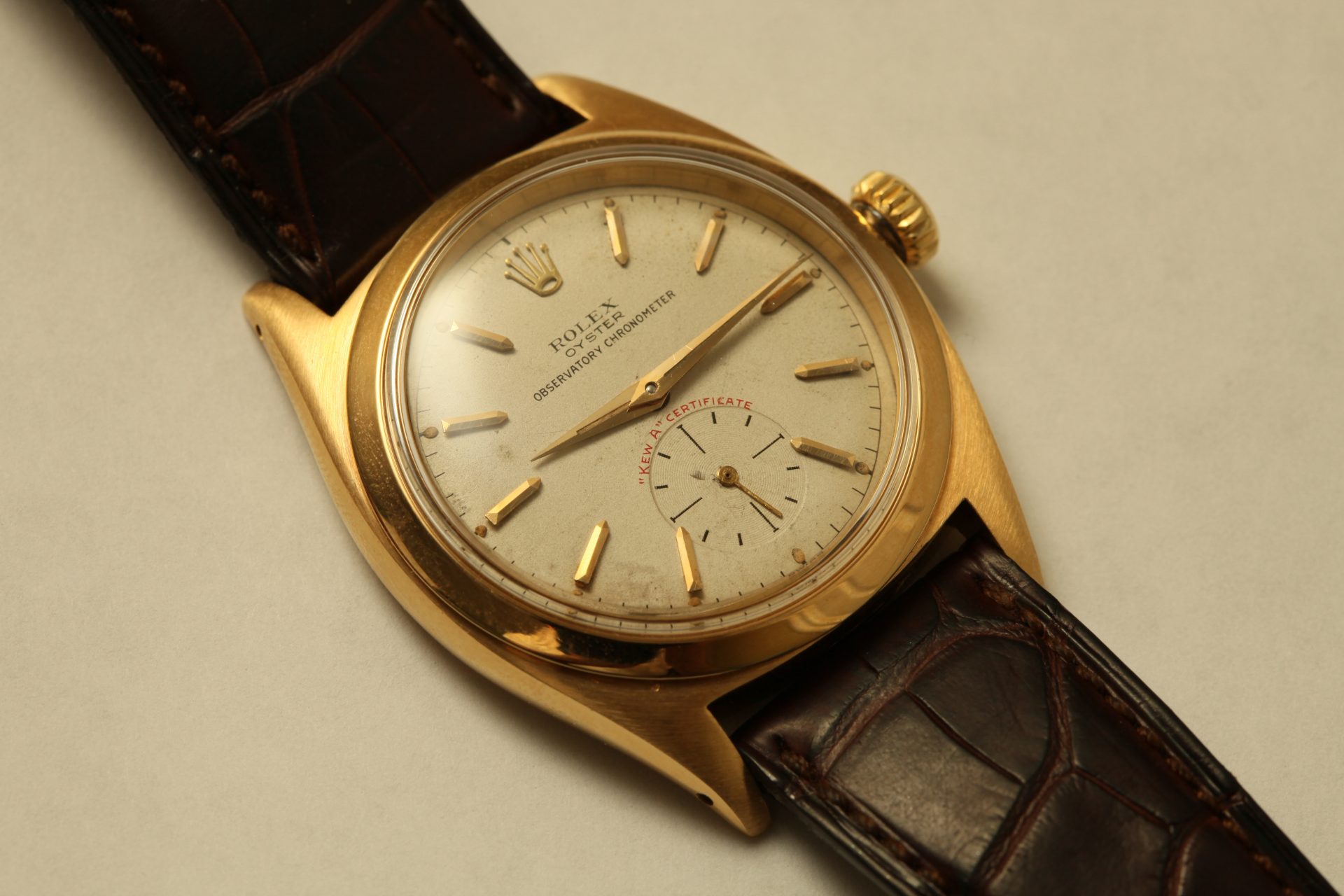
This is my nerdy, precision-loving, engineer side coming out.
These were horology’s Formula 1 race cars made in the 1940s, 1950s and 1960s.
Before 1968 and Seiko, only two or three brands cased observatory chronometer movements for the public.
One was Rolex with the “Kew A”. They made two different models – the 31mm steel Oyster Speedking in about 120 examples, and a 34mm gold version in 24 examples, known as the ref. 6210.
They were hand-made and regulated by Rolex’s top watchmaker and then shipped to the Kew Observatory in Teddington, UK from Geneva – and they still were able to receive a “Kew A” rating.
The tests were designed for large ship chronometers and these were tiny, 23mm calibres.
They lasted 44 days and were the most stringent chronometer tests in the world by far.
Patek Philippe also made, and sold, a handful of models, one exceptional example being the ref. 2458 JB Champion.
A beautiful time-only watch that sold for more than $4m (approx. £3.4m) in 2012.
So those two – the JB Champion and the Rolex ref. 6210 – sing to my heart.
Only 140 in total of these movements were made and cased by Rolex.
Of the 24 cased in the ref. 6210, we probably know where six or seven are.
It’s an obscure little thing, but I love the pursuit of precision and advancing state-of-the-art watchmaking, and the greatness of those brands creating things for the first time.
That’s what I search for in my watches and it’s what I encourage clients to buy.
HONORABLE MENTIONS
Given the opportunity to select five subs, Paul Boutros selected these classics for his bench.
1. Rolex ref. 8171, triple calendar with moonphase.
2. Richard Mille. Any early model made with Audemars Piguet.
3. Rolex MilSub.
4. Patek Philippe ref. 530 chronograph.
5. Grand Seiko Spring Drive ref. SBGZ003.

